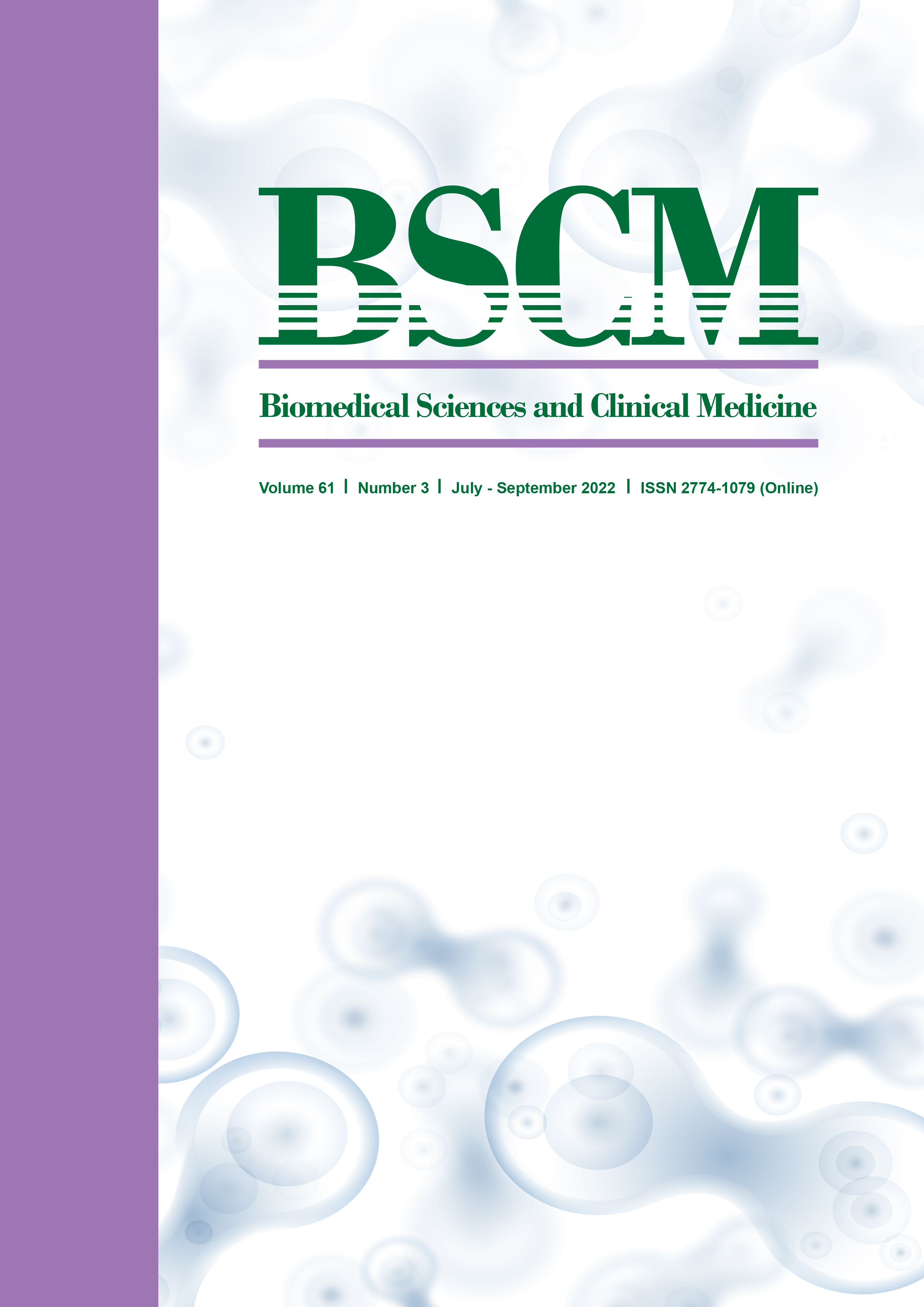Examination of Antibiotic Response of Staphylococcus aureus in Human Saliva for Personal Identification in Forensic Science: A Preliminary Study
Main Article Content
Abstract
OBJECTIVE To study the relationship among antibiotic response profiles and to compare differences in antibiotic response profiles of Staphylococcus aureus (S. aureus).
METHODS Saliva samples were collected from 33 donors after which S. aureus in the samples was identified and isolated for morphological and biochemical testing. The antibiotic response was analyzed by disk diffusion and the patterns of antibiotic response from the individual saliva samples were compared to identify the differences in antibiotic response profiles.
RESULTS All 33 saliva samples tested positive for S. aureus. The antibiotic responses were analyzed by disk diffusion, with test values being classified as Sensitive (S) Intermediate (I) or Resistant (R). The antibiotic response profiles showed only four matching pairs with each pair dissimilar from the other profiles. The antibiotic response profiles had a high incidence of differentiation of up to 93.94%.
CONCLUSIONS In this study, S. aureus in saliva samples was identified by morphological and biochemical testing. Antibiotic response profiles can be analyzed by disk diffusion and the results can be used to aid in the identification of individuals with a high level of differentiation of up to 93.94%. Our proof-of-concept study shows that antibiotic response profiles of saliva samples can be used in forensic science to identify individuals.
Article Details

This work is licensed under a Creative Commons Attribution 4.0 International License.


